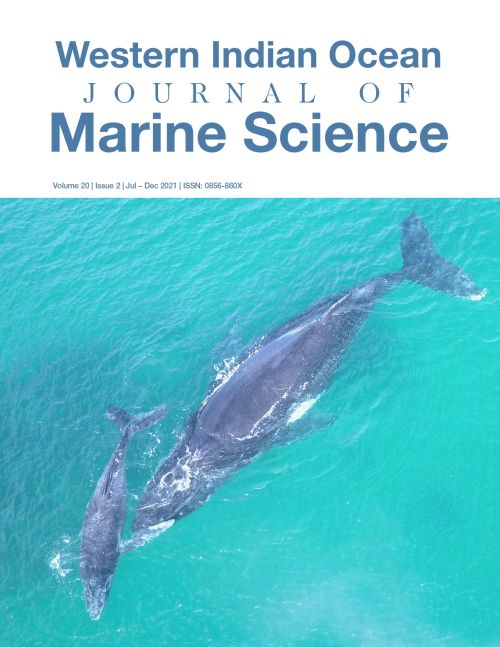Main Article Content
Composition and structure of the mangrove fish and crustacean communities of Vanga Bay, Kenya
Abstract
Mangroves support coastal fisheries, particularly by providing nurseries for juvenile fish. However, much remains unknown about the fish and crustacean communities in mangroves and about the lifecycles and behaviours of individual species. This study is the first to describe the fish and crustacean communities in the Vanga mangrove ecosystem, the largest mangrove forest and the most important marine fisheries landing site in southern Kenya. Using fyke nets, 14 mangrove creek sites were sampled once every 3 months during spring tides, between September 2015 and September 2017. The sampling period covered the north east (NEM) and south east (SEM) monsoon seasons. A total of 1,879 fishes and 1,132 crustaceans were caught, represented by 59 and 16 species, respectively. Over 95 % of the fishes caught were juveniles with 50 % of both fish and crustacean species being of commercial importance. About 70 % of the catch was dominated by only 6 fish species with Yarica hyalosoma and Acropoma japonicum contributing 44 % of the total abundance. Penaeus semisulcatus and Penaeus indicus dominated the crustaceans. Fish abundances differed significantly between seasons, with the SEM catches almost three times higher than those in the NEM, while crustaceans displayed no clear seasonality. The study documents for the first time the fish and crustacean communities in Vanga mangroves and confirms their importance as juvenile habitat for commercial species. The importance of mangrove and near mangrove habitat as nursery habitat for both fish and crustaceans emphasizes the need for conservation particularly of seaward edges






